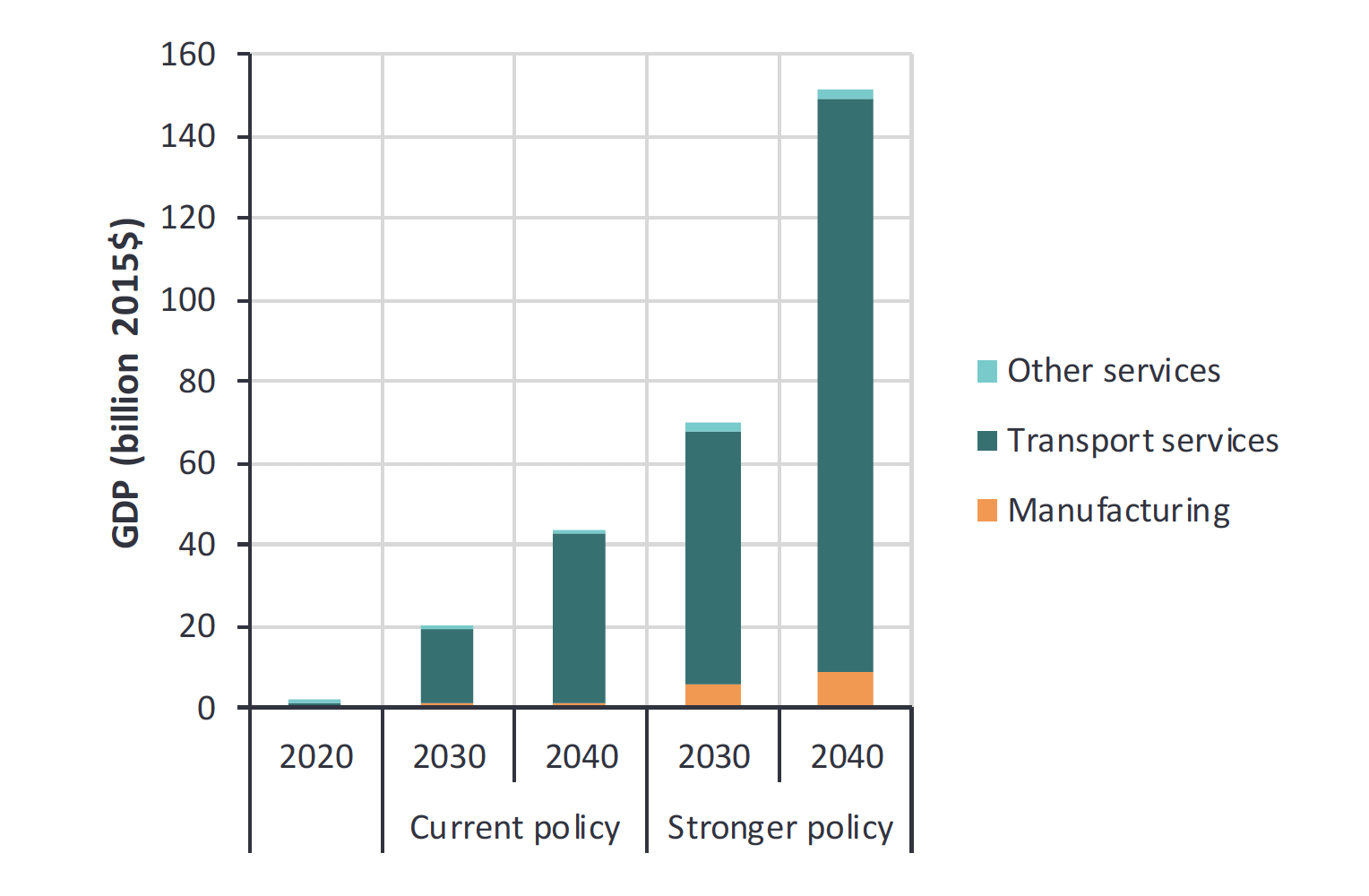This report examines what level of zero-emission vehicle (ZEV) adoption and related economic activity is likely in Canada based on the declining cost of ZEVs, consumer preferences and current federal and provincial policies. It also analyzes the adoption and economic impacts of implementing stronger policies that require greater adoption of ZEVs and provide support for Canadian ZEV manufacturing.
In response to current policy, ZEVs are projected to account for 14% of new light-duty vehicle sales, 11% of medium-duty sales and 13% of heavy-duty sales by 2040. These levels of adoption are below Canada’s light-duty ZEV target of 30% by 2030 and 100% by 2040. This projected growth in sales is driven by declining battery costs and existing ZEV-supportive policies.
At present, Canada’s ZEV economy accounts for about $1.1 billion of GDP (2015$) and employs around 10,000 people. In response to current policy, this economy is projected to grow to $43 billion of GDP and 342 thousand workers by 2040. It could grow further under stronger policy, to $152 billion and 1.1 million workers in 2040.

SOURCE: ICCT



